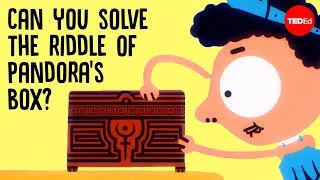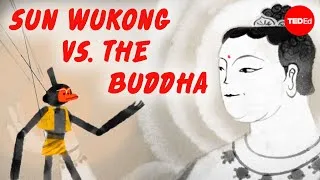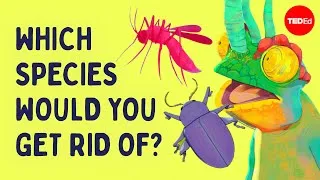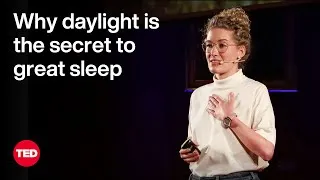請雙擊下方英文字幕播放視頻。
譯者: 穎君 紀
審譯者: 麗玲 辛
00:07
According to legend,
in the 27th century BCE,
0
7128
3587
根據傳說, 在公元前 27 世紀,
00:10
the Yellow Emperor of China charged
his historian, Cangjie,
1
10798
3963
統治中國的黃帝命令史官倉頡
00:14
to develop a system of writing.
2
14761
1918
開發書寫系統。
00:17
Sitting alongside a riverbank, Cangjie
noticed the imagery that surrounded him.
3
17138
4588
倉頡坐在河岸邊,發現
他周遭有各式各樣的圖像。
00:22
From this, he created
the first Chinese characters.
4
22226
3212
他從這些圖像創造出第一個中文字。
00:25
And that night, the sky rained millet
while ghosts cried,
5
25730
3795
那天晚上,天降小米雨,鬼魂哭泣,
00:29
fearing their actions may now be
condemned by the written word.
6
29525
3045
擔心自己的行為可能被記錄、被譴責。
00:32
We can’t say for sure whether
the story is true.
7
32987
2753
這故事的真實性無法確定,
00:35
But the earliest artifacts containing
Chinese characters
8
35740
3003
但,包含中文字的最古老的文物
00:38
date to the Shang Dynasty,
around 1250 to 1050 BCE,
9
38743
4671
可追溯到商朝,也就是公元前
1250 年到 1050 年左右,
00:43
still making it one of the earliest
forms of written language.
10
43664
3087
仍然證明了中文字是
最早出現的文字系統之一。
00:47
Characters etched on ox bones
and turtle shells
11
47293
2711
被刻在牛骨和烏龜殼上的文字
00:50
show Shang kings’ writings
to their ancestors,
12
50004
3087
是商朝皇帝寫給他們祖先的作品,
00:53
discussing everything from agriculture
to the origins of a toothache.
13
53257
3629
從農業到牙痛的起源,主題包山包海。
00:57
And as the legend suggests,
14
57095
1543
正如傳說所述,
00:58
these ancient characters
were mainly pictograms,
15
58638
2878
這些古老文字主要是象形符號,
01:01
or symbols that resemble
what they’re meant to represent.
16
61516
3003
也就是長得像它們代表的意思的符號。
01:04
Even today, some of the most foundational
Chinese characters remain pictographic,
17
64894
4338
到了現代,一些最基本的
中文字仍然是象形字,
01:09
like rén (人), which means person,
and mù (木), which means wood or tree.
18
69232
5088
例如「人」的意思是人、
「木」的意思是木頭或樹。
01:14
Some characters are ideograms, or
symbols that represent abstract concepts,
19
74654
4504
有些字是指事字,
也就是指涉抽象概念的符號,
01:19
like the numbers yī (一),
èr (二), and sān (三).
20
79158
3295
例如數字「一」、 「二」和「三」。
01:22
Others are compound ideograms,
21
82620
2002
有些則是會意字,
01:24
which combine two or more
pictograms or ideograms.
22
84622
3045
結合兩個或多個表意或象形符號。
01:27
For example, xiū (休) places
the character for person
23
87875
3545
例如「休」這個字,把「人」
01:31
next to the character for tree
and means to rest.
24
91420
3254
放在「木」旁邊,意思是休息。
01:34
However, most modern-day characters
are known as logograms,
25
94882
3796
然而,現代大多數文字都是形聲字,
01:38
and are constructed of two components:
a radical component,
26
98678
3503
由兩個部分構成:一個部首,
01:42
which gestures at the meaning
of the character,
27
102181
2252
指出該字的意義,
01:44
and a sound component,
which hints at its pronunciation.
28
104433
3212
和一個聲符,暗示該字的發音。
01:47
And all characters are built
from a variety of strokes,
29
107812
3170
每個字都由多種不同的筆劃構成,
01:50
which are often simplified
to eight basic types.
30
110982
2669
通常簡化為八種基本筆劃:永字八法。
01:53
There are 214 radicals,
each with its own definition.
31
113860
3670
部首有 214 個,
每個部首都有意義。
01:57
Some can stand alone, while others cannot.
32
117655
2503
有些可以獨立使用,有些不能。
02:00
For instance, the radical rì (日),
written on its own means sun.
33
120366
4171
例如,「日」這個部首
獨立使用時是指太陽。
02:04
It’s also used in characters
with sun-related definitions,
34
124787
3045
它也出現在跟太陽相關的字裡,
02:07
such as xiǎo (晓) meaning dawn.
35
127832
2336
例如「曉」,意思是黎明。
02:10
The radical cǎo (艹), on the other hand,
never stands alone,
36
130459
3295
草部「艹」則不能獨立使用,
02:13
but can be found within characters related
to grass and plants,
37
133754
3045
但會出現在跟草和植物相關的字中,
02:16
like huā (花) meaning flower.
38
136799
1919
例如「花」,意思是花。
02:19
And the radical shuǐ (水), meaning water,
always stands alone,
39
139010
3712
水部「水」指水,總是獨立使用,
02:22
but has a variant (氵) that is used when
it’s part of more complex characters
40
142722
3712
但有一個變體「氵」,
出現在更複雜的字裡,
02:26
like hé (河), meaning river.
41
146434
2085
如「河」,意思是河流。
02:28
Radicals can appear
in different positions:
42
148686
2211
部首可以放在不同的位置:
02:30
to the left, to the right, above, below,
43
150897
3503
左側、右側、上方、下方,
02:34
or even surrounding the rest
of the character.
44
154400
2294
甚至包住其他字。
02:36
There are many more sound components
than radicals,
45
156986
2711
聲符比部首多很多,
02:39
with estimates ranging in the thousands.
46
159739
2169
估計約有數千個。
02:42
Similar sounding words often share
the same sound component,
47
162074
3212
發音類似的字通常聲符相同,
02:45
and their radicals help shed light
on their meanings.
48
165286
2544
部首負責提示該字的意思。
02:47
Take fēng (峰) and fēng (蜂).
49
167830
1794
例如「峰」和「蜂」,
02:49
The radical shān (山) means mountain,
50
169790
2044
部首「山」的意思是山,
02:51
which hints at the first
character’s definition: summit.
51
171834
3003
這暗示了第一個字的字義:山頂。
02:55
The radical in the second character,
chóng (虫), means insect,
52
175004
3545
第二個字的部首「虫」指昆蟲,
02:58
and together with the sound component
means bee.
53
178674
2753
與聲符「夆」組合起來後,指蜜蜂。
03:02
While many words in Chinese sound similar,
just like in other languages,
54
182094
3712
中文有許多字發音相似,
但跟其他語言一樣,
03:05
context or tonality helps
clarify their meaning.
55
185973
2920
上下文或聲調有助於釐清它們的字義。
03:09
Yet how each character is pronounced
depends on dialect,
56
189101
3587
然而每個字的發音方式取決於方言,
03:12
which varies across the country.
57
192688
1961
各國各地都有不同念法。
03:14
So conversations in Chengdu may sound
vastly different than in Nanjing,
58
194899
4546
因此,成都的對話聽起來
可能跟南京的對話不一樣,
03:19
but in both places,
the written language is the same.
59
199445
2920
但兩地的書面語都一樣。
03:22
And unlike the romance languages,
60
202698
1669
與拉丁語系語言不同,
03:24
Chinese has no gendered nouns
or verb conjugations.
61
204367
3003
中文的名詞沒有性別,動詞沒有變位。
03:27
So the character chī (吃), meaning to eat,
remains unchanged
62
207411
3671
因此,表達進食的動詞「吃」保持不變,
03:31
whether the subject is yourself,
a coworker, or a lesion of fearful ghosts.
63
211082
4754
不論主詞是自己、同事,
或一群膽小的鬼魂,
03:36
To indicate the past, a marker
like le (了) can be added.
64
216045
3545
要指過去式時態的話,
可以加上「了」等標記,
03:39
So “I eat bread” becomes “I ate bread.”
65
219757
2794
「我吃麵包」變成「我吃了麵包」。
03:42
Over the years, the Chinese writing
system has undergone many changes.
66
222927
3962
隨著時代流轉,中文書寫系統
經歷了許多改變。
03:47
As characters went from being
etched in bone, to cast in bronze,
67
227014
3379
字從骨頭上的雕刻
變成青銅上的鑄刻,
03:50
to brushed on paper,
68
230393
1334
再被畫在紙上,
03:51
their script has evolved along the way.
69
231727
2002
寫法也隨著這個過程演化。
03:53
In the 1950s and 60s,
the Chinese Communist Party introduced
70
233896
4004
一九五、六零年代 ,中國共產黨推出
03:57
new simplified versions
of the traditional characters,
71
237900
2711
簡化版的中文字,
04:00
which are now standard in China,
72
240611
1794
它是現在中國的標準書寫系統,
04:02
though traditional characters remain
in use in Hong Kong and Taiwan.
73
242530
3336
香港和台灣則繼續使用傳統的繁體字。
04:06
And while the Chinese character
system may seem unique,
74
246033
2628
雖然中文字系統看起來很獨特,
04:08
its development greatly influenced
the spoken languages
75
248786
2878
但中文字的發展大大影響了
04:11
and writing systems of its neighbors.
76
251664
1918
鄰國的口語和書寫系統。
04:13
For example, around 60% of Japanese
dictionary entries are kanji—
77
253833
4337
舉例來說,日語辭典的條目中
約有六成是「漢字」,也就是
04:18
characters that originated in Chinese
or were created from its elements.
78
258337
4129
源自中文或基於其元素創造出來的字。
04:22
With a 3,000 year history,
79
262550
2085
承載著三千年的歷史,
04:24
Chinese characters have and will
continue to leave their mark.
80
264719
3753
中文字將繼續留下自己的印記。
New videos
Original video on YouTube.com
關於本網站
本網站將向您介紹對學習英語有用的 YouTube 視頻。 您將看到來自世界各地的一流教師教授的英語課程。 雙擊每個視頻頁面上顯示的英文字幕,從那裡播放視頻。 字幕與視頻播放同步滾動。 如果您有任何意見或要求,請使用此聯繫表與我們聯繫。







